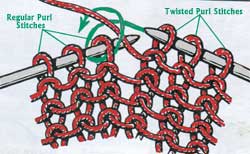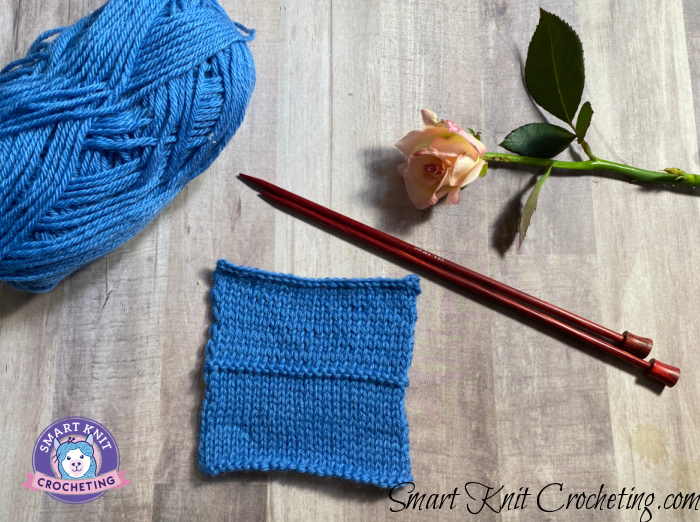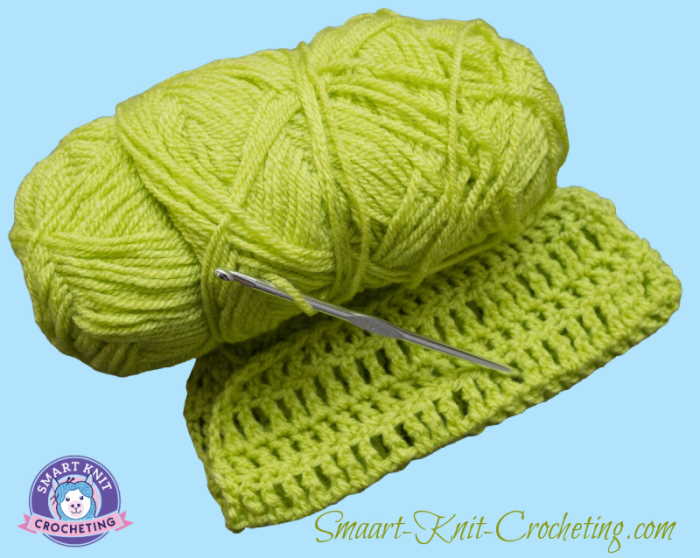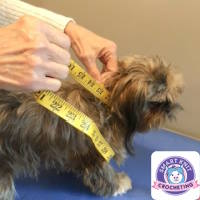- Home
- How to Knit: Basics
- Twisted Stitch
The Knit Twisted Stitch: Mistake or Clever Design Element
Rewritten by Janice Jones |Updated 04-04-2024
A Knitted Twisted Stitch is usually considered an error, but experienced knitters know how to avoid or fix them. This is a skill all beginning knitters need to master, so their knitted fabric looks more professional.
In this article, we are going to learn how to identify them, avoid them and then fix them if necessary. I will also touch on the topic of twisted stitches as a decorative element. Twisted stitches are not bad, per se, but they are problematic if they have been made inadvertently.
A typical knitted fabric should be uniform, where all stitches are the same size and look the same. We use the word tension to describe a process that knitters strive to learn, so their knitting does look good. But sometimes, a stitch pops up that doesn't look the same as the others. Likely, it could be a twisted stitch.

What is a Knitted Twisted Stitch
As a new knitter, you may not even be aware that some of your stitches or all of them are twisted. They occur when we insert our needles differently or wrap our yarn in the opposite direction.
Obviously, if you want to create twisted stitches, that's fine, but new knitters are not always mindful of how they wrap or insert their needles.
Quick Anatomy of a Knitted Stitch
 Twisted Knit Stitch
Twisted Knit Stitch Twisted Purl Stitch
Twisted Purl StitchBefore you can really understand a twisted stitch, you need to learn to read your knitting. This entails understanding how the stitches rest on the needles and how each stitch looks as part of a knit fabric.
Before I go any further, I want you to know that there is no right or wrong way for stitches to sit on the needles but to make it a little easier to understand, we'll call it the "standard" way for stitches to rest and the "nonstandard" way for stitches to rest on the needles. Here I'm talking about the left-hand needle.
Each stitch looks like a little loop as it sits on the needle. If you look directly down with the needle’s point facing you, there are two legs, one on the right side and one on the left side.
Now hold the needle directly in front of you. The portion closest to you is the right leg, and the one on the other side of the needle is the left leg.
The standard way for the stitches to sit on the needle is with the front (right leg) slightly forward towards the tip and the left leg slightly backward away from the tip.
Anatomy of a Knitted Twisted Stitch
If you look closely at twisted stitches, you will notice that these stitches cross at the base of the stitch. Untwisted stitches have a little space between their two legs.
Remember, the standard method for making knit and purl stitches is the most common but not the only way.
To create a knit stitch, as you know, you would insert your right-hand needle into the front or leading leg of the stitch from front to back. The yarn is wrapped below the needle to the front, and over, then the stitch is pulled through.
To purl, insert the right needle into the front or leading leg from right to left. The yarn is then wrapped over the needle and around before pulling through.
Regardless of whether you make a purl or a knit stitch, the needle is inserted into the right or leading leg or the one closest to you.
If both steps are followed, then there are no twisted stitches. But if either the purl or the knit stitch is made oppositely, then you get a twisted stitch. In other words, the knit stitch and the purl stitch need to match, or the result is a twisted stitch.
How to Knit Stitches Become Accidentally Twisted
There are a couple of ways stitches become accidentally twisted.
You are wrapping the yarn in the opposite direction when making a purl stitch. Instead of wrapping the yarn over and around the needle, you wrap it from under the needle and over.
Your stitches are not set properly on the left-hand needle. Instead of the front or right leg is slightly forward, the back (left leg) is forward. This sometimes happens if you drop a stitch and place it back on the needle in the wrong position. Or you wrapped the yarn in the wrong direction when working your last row.
Easy Fixes
Get into the habit of wrapping the yarn around the needles properly. This may take a little practice, but once you have the hang of it, you build muscle memory that allows you to do this without thinking.
If the stitches are set on the needle with the left leg forward, you have two options. First, you can readjust the stitch with the tip of the other needle, so it is sitting correctly. Secondly, I think most experienced knitters do it this way, simply work through the back leg of the stitch.

Combination or Combined Knitting
Remember that I mentioned above that there is no right or wrong method of knitting, just standard and nonstandard. Combination knitting is a good example of a nonstandard method. This might be something to consider, and it does not result in twisted stitches.
If you learned to knit from someone from eastern Europe, the Middle East, or Russia, you might be wondering why you insert your needle in the left leg when making a knit stitch or wrap your yarn in the opposite way that I described above.
If you are a standard Western knitter, you get into the habit of wrapping the yarn counterclockwise around the needle for both knit and purl stitches.
Eastern European knitters wrap the yarn around the needle clockwise for both knit and purl stitches. This causes the stitches on the needle to be mounted just opposite as we would expect. The left leg of the stitch is positioned in the front, with the right leg slightly backward.
Combination Verses Western Knitting
- Both can result in twisted stitches if not done properly.
- Combination knitting results in a tighter fabric with a slightly smaller gauge.
- In combination knitting, stitches are worked in the left leg, which is the leading leg.
- In combination knitting, the yarn is wrapped clockwise when making purl stitches.
When a Twisted Stitch is Not an Error
From time
to time a knit pattern requires you to make to knit a twisted knit or purl
stitch.
Often this simple technique brings a surprisingly decorative look to a knitted fabric.
Here is one more example where twisting a stitch eliminates holes along raglan lines of the seamless sweater.

Pin for Future Reference
Raglan increases very often are created by the yarn overs (YO) made in the knit (right side of knitting fabric) rows. In the next row yarn overs (YO) has to be knitted (if you are knitting your sweater in the rounds). It leaves the holes along raglan lines.
They look decorative but it doesn't work great for winter garments. The size of the hole can be made much smaller if you use a twisted KNIT STITCH to knit a YO from the previous row.
You can compare the results on my swatch. A top part of it is knitted without twisting a YO stitch in the next row. A bottom part has a YO stitch twisted in the next row.
How to determine the way YO has to be twisted in the next row?
You don't have to memorize any particular rules for doing this.
Just try to experiment a little bit with your stitches.
Insert the tip of the right needle through the legs of the yarn over, remove it from the left needle, twist it till you have a cross similar to the pictures shown above, and return it back to the left needle.
Knit a twisted stitch the way you usually do it (through the front or back loop). After a few times doing this you will figure out the way of twisting YO without removing it from the left needle.
Increases along raglan lines not only can serve for technological purpose, but also can be decorative elements for your garment. A few patterns of decorative raglan lines can be found at the Raglan Sleeves page.










